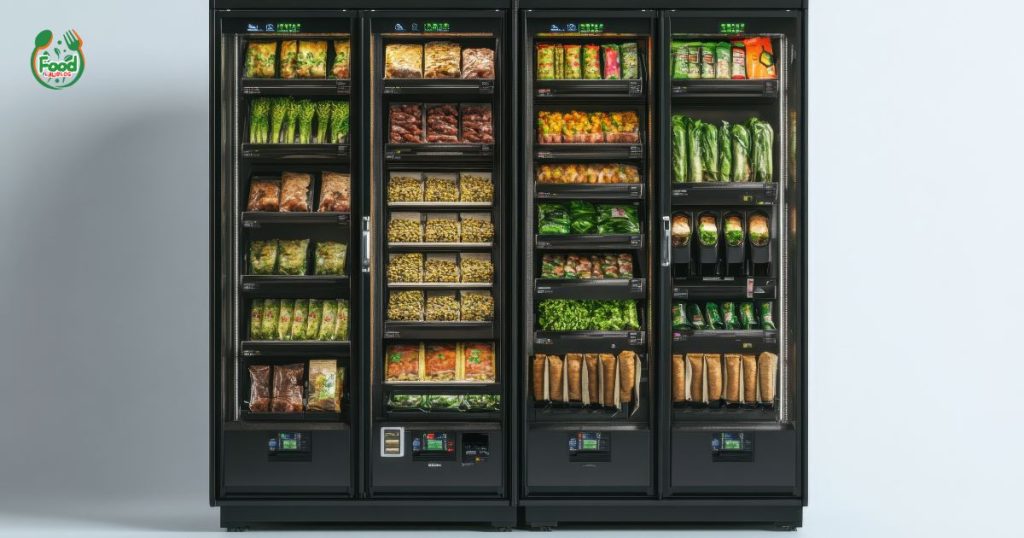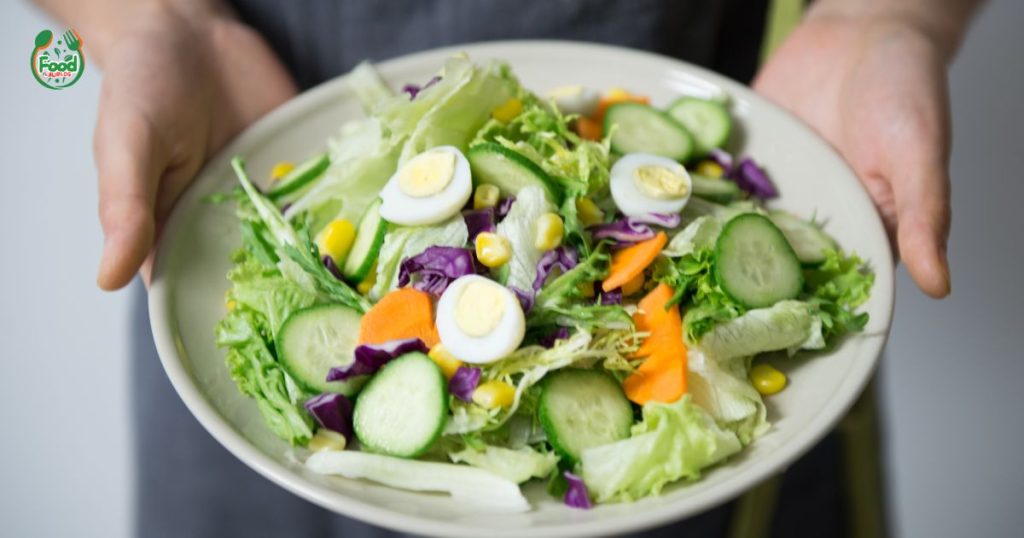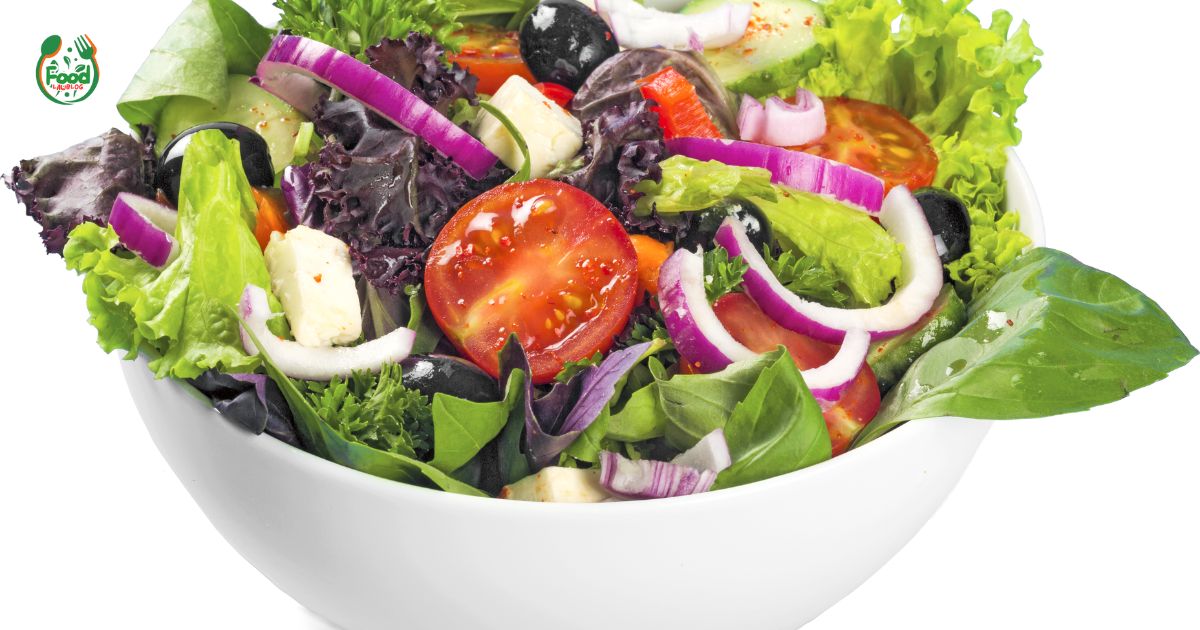Introduction
Great Fast Food Salads: Discover the best, healthiest, and most delicious great fast food salads in 2026. Our guide covers low-calorie, high-protein, and keto-friendly options, as well as ordering tips. The landscape of quick-service dining has undergone significant evolution. Gone are the days when “fast food” was exclusively synonymous with fried fare and high-calorie indulgence. Now, a quiet revolution is taking place in drive-thrush and on digital ordering apps across the country.

In 2026, the humble fast-food salad has transformed into a culinary centrepiece, offering sophisticated flavours, robust nutrition, and unprecedented convenience. Innovations in sourcing, advancements in food technology, and a consumer-driven demand for transparency have created a new era of delicious, great fast food salads that cater to every dietary need and lifestyle.
Whether you’re a busy professional needing a nutritious lunch, a health-conscious individual tracking macros, or simply someone seeking a fresh and satisfying meal on the go, the options have never been better. This guide will navigate the exciting world of fast food salads in 2026, helping you make informed, delicious, and healthy choices without compromising on speed or quality. We will explore what defines a superior salad, how to customise your order like an expert, and how to avoid common nutritional pitfalls.
What Makes a Truly Great Fast Food Salad in 2026?
The standard for a fast-food salad has been significantly raised. A truly delicious and great fast food salad in 2026 is a complex interplay of quality, nutrition, and sensory experience. It’s no longer just a pile of iceberg lettuce with a few tired toppings. Here’s what sets the best apart.
Uncompromising Ingredient Quality
The foundation of any exceptional salad is its ingredients. Leading chains now prioritise freshness and responsible sourcing practices. This means crispier greens, often from regional suppliers, and a move toward more seasonal produce. You’ll find a wider variety of lettuce bases beyond romaine, including spinach, arugula, and kale blends. Toppings are also getting an upgrade, with higher-quality cheeses, nuts, and seeds becoming standard. This focus on sourcing isn’t just about taste; it’s about providing more nutrient-dense and satisfying meals.
The Art and Science of Texture
A monotonous salad is a forgotten salad. The best fast food salads of 2026 are masterful compositions of texture and flavour. They deliver a satisfying crunch from components like roasted chickpeas, crisp apple slices, or toasted pepitas. This is balanced with creamy elements, such as avocado, goat cheese, or a well-emulsified dressing. The contrast between soft grilled chicken, snappy bell peppers, and tender greens creates a dynamic eating experience that keeps you engaged from the first bite to the last.
Balanced Macronutrients for Real Energy
Modern consumers are more nutritionally savvy than ever, and fast food menus are reflecting this trend. A great salad provides a balanced mix of protein, healthy fats, and smart carbohydrates.
- Protein: Essential for satiety and muscle maintenance. Look for options with ample grilled chicken, steak, tofu, or plant-based protein sources.
- Healthy Fats: Avocados, nuts, seeds, and olive oil-based dressings provide flavour and support nutrient absorption.
- Fibre-Rich Carbs: Components such as beans, corn, quinoa, and a variety of vegetables provide sustained energy and support digestive health.
A Strategic Approach to Salad Dressings
The dressing is no longer an afterthought; it’s a critical component that can make or break a salad, both in taste and nutrition. The trend is moving away from heavy, sugar-laden creamy dressings toward lighter vinaigrettes and yoghurt-based options. Many chains now offer dressings on the side as a default, giving you full control over how much you use. Some even provide nutrition facts per serving, empowering you to make a more informed choice.
Conscious Control Over Sodium
One of the historical drawbacks of fast food has been high sodium content. While still a concern, the best fast food salads in 2026 are designed with sodium awareness in mind. This is achieved by using fresh, unprocessed ingredients, offering low-sodium protein options, and creating dressings that rely on herbs and acidity for flavour rather than just salt. Smart consumers can further reduce their sodium intake by being selective with salty toppings, such as cured meats and certain cheeses.
The Top Fast Food Salad Categories of 2026
The modern fast food menu caters to a wide array of dietary goals and preferences. Here are the most popular categories of delicious, great fast food salads you’ll find.
Low-Calorie Fast Food Salads
Designed for weight management without sacrificing flavour, these salads typically stay under 500 calories, including a light dressing. They feature a generous base of leafy greens, lean protein like grilled chicken breast, and a bounty of non-starchy vegetables.
- Key Components: Spinach or mixed greens, grilled chicken or shrimp, cucumbers, tomatoes, bell peppers.
- Dressing Strategy: Light vinaigrette or a squeeze of fresh lemon/lime.
- Customisation Tip: Ask for double the vegetables to increase volume and fibre intake.
High-Protein Fast Food Salads
Ideal for post-workout recovery or for those looking to stay full longer, these salads pack a powerful protein punch, often exceeding 30 grams. They combine one or more protein sources with nutrient-dense toppings.
- Key Components: Double portion of grilled chicken, steak, or a plant-based patty; hard-boiled eggs; beans; and quinoa.
- Dressing Strategy: A Greek yoghurt-based dressing or a nut-butter vinaigrette for an extra protein boost.
- Customisation Tip: Add a scoop of black beans or chickpeas for a boost of plant-based protein and fibre.
Keto-Friendly Fast Food Salads
Catering to the low-carb, high-fat lifestyle, keto salads are now a staple. These options eliminate high-sugar fruits, starchy vegetables, and grains, focusing instead on healthy fats and proteins.
- Key Components: Romaine or spinach base, grilled steak or chicken, avocado, cheese, bacon, and nuts.
- Dressing Strategy: Full-fat ranch, blue cheese, or a simple olive oil and vinegar dressing.
- Customisation Tip: Hold the croutons and corn; ask for extra avocado or cheese instead.

Vegetarian and Vegan Fast Food Salads
Plant-based eating is more accessible than ever. Vegetarian salads often feature cheese, eggs, or creamy dressings, while vegan versions are entirely free of animal products. The best options offer substantial, flavorful plant-based proteins.
- Key Components: Tofu, plant-based chicken alternatives, black beans, chickpeas, quinoa, and a wide mix of vegetables, seeds, and nuts.
- Dressing Strategy: Look for certified vegan vinaigrettes. Tahini-based dressings are a great creamy, vegan choice.
- Customisation Tip: Ensure your protein source is truly vegan; some plant-based patties may contain egg or dairy. [Internal Link: See our full guide to Vegan Dining Out]
Gluten-Free Fast Food Salads
For those with celiac disease or gluten sensitivity, navigating fast food can be tricky. Dedicated gluten-free salads typically exclude croutons, crispy noodle toppings, and breaded proteins. Cross-contamination awareness at the chain is key.
- Key Components: Any non-breaded protein, all vegetables and fruits, gluten-free grains like quinoa.
- Dressing Strategy: Verify that the dressing is certified gluten-free, as some use wheat-based thickeners.
- Customisation Tip: When ordering, explicitly state you need a gluten-free meal to prompt staff to take extra precautions.
Mastering Customisation: How to Build Your Perfect Salad
The power of modern fast food salad lies in its customisation. Digital apps and well-trained staff enable you to create a meal that perfectly suits your taste and nutritional needs.
Your Customisation Checklist:
- Start with the Base: Don’t Just Accept the Default. Ask for a spinach or kale blend for more nutrients, or request “double greens” for extra volume.
- Power Up the Protein: If your goal is to feel satiated, don’t hesitate to ask for a double portion of your preferred lean protein.
- Load Up on Veggies: Most non-starchy vegetables (such as cucumbers, peppers, onions, and tomatoes) add minimal calories but plenty of fibre and micronutrients. Add as many as you can.
- Choose Fats Wisely: Opt for whole-food fats, such as avocado, nuts, or seeds, over excessive cheese or creamy dressings. A small serving offers big flavour and significant health benefits.
- Hack Your Dressing: Always get dressing on the side. This is the single most effective way to control calories, fat, and sugar. Use the “dip your fork” method: dip your fork in the dressing before taking a bite of salad, rather than pouring it all over the salad.
- Add a Flavour Boost: Ask for a side of salsa or pico de gallo—they are excellent, low-calorie, high-flavour alternatives to dressing. A squeeze of fresh lime or lemon can also brighten the entire salad.
A Deeper Dive into Salad Nutrition
Understanding the nutritional components of your salad empowers you to build a meal that works for you. [Authority Link: Reference the USDA National Nutrient Database for specific ingredient information.]
Protein: The Satiety Superstar
Protein is crucial for feeling full and satisfied. Aim for at least 20-30 grams in your meal.
- Lean Sources: Grilled chicken breast, turkey, shrimp, tofu.
- Higher-Fat Sources: Steak, salmon, cheese, bacon.
Fibre: The Unsung Hero
Fibre aids digestion, helps manage blood sugar levels, and contributes to feelings of fullness. Leafy greens, beans, nuts, seeds, and non-starchy vegetables are all excellent sources of fibre. A great fast food salad should provide at least 7-10 grams of fibre.
Healthy Fats vs. Unhealthy Fats
Fats are essential for hormone production and the absorption of vitamins A, D, E, and K.
- Prioritise: Monounsaturated and polyunsaturated fats from avocado, olive oil, nuts, and seeds.
- Limit: Saturated and trans fats found in fried toppings, excessive cheese, and creamy, processed dressings.
Smart Carbohydrates
Carbohydrates are your body’s primary energy source. Focus on complex carbs that provide sustained energy and fibre.
- Good Choices: Quinoa, black beans, chickpeas, corn, sweet potatoes.
- Limit: Refined carbs, such as croutons, crispy noodles, and sugary dried fruits.
The Sodium Factor
Sodium is an essential mineral, but excessive intake is common in restaurant food. Be mindful of high-sodium ingredients:
- Cured meats (bacon, salami)
- Pickled items (jalapeños, olives)
- Salty cheeses (feta, parmesan)
- Many pre-made dressings and marinades
Taste, Texture, and the Perfect Pairing
A truly delicious salad is a symphony of flavours and textures. The best chefs, even in fast food, understand how to balance these elements.
The Five Flavours in Harmony
- Sweet: From corn, roasted sweet potatoes, fresh fruit (like apples or berries), or a touch of honey in the dressing.
- Salty: From a sprinkle of cheese, roasted seeds, or a well-seasoned protein.
- Sour (Acidity): Crucial for brightness. Comes from citrus juice, vinegar in the dressing, or pickled onions.
- Bitter: Adds complexity. Found in greens like arugula, kale, or radicchio.
- Umami: The savoury “meaty” flavour. Provided by mushrooms, roasted tomatoes, parmesan cheese, or soy-based dressings.

Dressing and Topping Pairing Cheat Sheet
- For a Creamy Base (Ranch, Blue Cheese): Pair with crunchy and sharp flavours. Think bacon, raw onions, and crisp romaine.
- For a Zesty Vinaigrette: Pair with sweet and soft elements. Think goat cheese, berries, nuts, and spinach.
- For a Southwestern Vibe (Salsa, Chipotle Dressing): Pair with avocado, corn, black beans, and tortilla strips.
- For an Asian-Inspired Dressing (Sesame Ginger): Pair with mandarin oranges, edamame, crunchy wonton strips (in moderation), and cilantro.
Trends in 2026: Sustainability, Seasonality, and Sourcing
The fast food industry is responding to consumer demands for more ethical and environmentally friendly practices.
- Sustainable Packaging: Expect to see more compostable and recyclable salad bowls made from plant fibres or recycled materials. Some chains are even piloting reusable container programs.
- Seasonal Menus: To ensure peak freshness and flavour, more brands are introducing limited-time seasonal salads that feature produce at its best, such as a summer salad with fresh peaches or an autumn salad with roasted squash.
- Transparent Sourcing: By using QR codes on packaging, chains are beginning to provide information about the origins of their ingredients. You may be able to trace your chicken to the farm or determine which region your lettuce was grown in. [Internal Link: Learn more about our company’s sustainability initiatives.]
A Sample 7-Day Fast Food Salad Plan
Here is a hypothetical one-week plan to show how you can enjoy a delicious, great fast food salad every day without getting bored.
Day 1: The Protein Powerhouse
- Theme: Post-workout recovery.
- Checklist: Double-grilled chicken, spinach and romaine base, hard-boiled egg, avocado, tomatoes, and light vinaigrette on the side.
- Macros Range: 40-50g Protein, 20-30g Fat, 15-25g Carbs.
Day 2: The Keto Commander
- Theme: Low-carb, high-fat energy.
- Checklist: Grilled steak, romaine lettuce, shredded cheddar, bacon bits, avocado, and full-fat ranch on the side. Hold croutons and corn.
- Macros Range: 30-40g Protein, 40-50g Fat, <15g Net Carbs.

Day 3: The Vegan Virtuoso
- Theme: Vibrant and plant-based.
- Checklist: Mixed greens with arugula, seasoned tofu or plant-based patty, quinoa, black beans, corn salsa, and tahini dressing.
- Macros Range: 20-30g Protein, 20-30g Fat, 40-50g Carbs.
Day 4: The Calorie-Conscious Classic
- Theme: Light and refreshing lunch.
- Checklist: Grilled shrimp, bed of spring mix, cucumbers, bell peppers, cherry tomatoes, a squeeze of fresh lemon and a drizzle of olive oil.
- Macros Range: 20-25g Protein, 10-15g Fat, 15-20g Carbs.
Day 5: The Southwestern Zest
- Theme: Bold and spicy flavours.
- Checklist: Grilled chicken, romaine, black beans, corn, pico de gallo, a sprinkle of tortilla strips, and a chipotle-lime vinaigrette.
- Macros Range: 30-40g Protein, 25-35g Fat, 35-45g Carbs.
Day 6: The Mediterranean Delight
- Theme: Fresh and herbaceous.
- Checklist: No protein (or add chickpeas), mixed greens, cucumbers, tomatoes, red onion, olives, feta cheese, lemon-herb vinaigrette.
- Macros Range: 10-15g Protein, 25-35g Fat, 20-30g Carbs.
Day 7: The “At-Home Hybrid”
- Theme: Cost-effective and customised.
- Checklist: Buy a simple base salad (greens and grilled chicken) from a chain restaurant. At home or in the office, add your own premium toppings, such as pistachios, goat cheese, and a high-quality balsamic glaze.
- Macros Range: Varies based on home additions.
Frequently Asked Questions (FAQ)
1. What are the best fast food salads for weight loss in 2026?
A: The best fast food salads for weight loss are those that are high in protein and fibre, yet low in overall calories. Look for salads built on a base of leafy greens with a lean protein, such as grilled chicken or shrimp. Maximise the volume of non-starchy vegetables, such as cucumbers, bell peppers, and tomatoes. The most critical factor is the dressing; always get a light vinaigrette on the side and use it sparingly. Avoid creamy dressings, fried toppings, and excessive cheese. A salad with fewer than 500 calories and over 25 grams of protein is an excellent target for a weight-loss-oriented meal.
2. Are the salad dressings at fast food restaurants healthy?
A: It varies greatly. Many fast food dressings, especially those with a creamy texture, such as ranch, Caesar, and blue cheese, are high in calories, sodium, and unhealthy fats. However, the industry has made significant strides. Most chains now offer lighter vinaigrettes made with olive oil, which are much healthier choices. The key is to read the nutrition information, which is often available on the app or website. Always ordering the dressing on the side gives you complete control over portion size, which is the most effective way to keep your salad healthy, regardless of which dressing you choose.
3. How can I keep my drive-thru salad fresh and crunchy until I eat it?
A: To prevent a soggy salad during your commute, ask for all “wet” ingredients to be packed separately. This includes the dressing, tomatoes, and any hot protein, such as grilled chicken. Keep the greens, cheese, nuts, and other dry toppings together. Most chains are happy to accommodate this. Also, ask for the dressing on the side. When you’re ready to eat, you can combine all the components, ensuring every bite is fresh and crisp. A small insulated lunch bag can also help maintain the temperature and freshness of your ingredients.
4. Can I find good vegetarian or vegan high-protein salads at fast food places?
A: Yes, absolutely. The availability of high-protein vegetarian and vegan salads has dramatically improved. Look for options that include substantial plant-based proteins, such as seasoned tofu, dedicated plant-based chicken or beef alternatives, or a hearty combination of quinoa, black beans, and chickpeas. Many menus now clearly label vegan items. To ensure a high protein count, you should request an extra portion of the plant-based protein source. Always double-check that the dressing is vegan, as some vinaigrettes can contain honey or other animal-derived ingredients.
5. How do I avoid hidden calories in a fast food salad?
A: Hidden calories in salads often come from three sources: the dressing, the toppings, and the “healthy” additions. A single packet of creamy dressing can add 200-300 calories. Fried toppings, such as crispy chicken or wonton strips, candied nuts, and excessive cheese, also add up quickly. Even seemingly healthy additions like dried cranberries are often packed with added sugar. The best strategy is to build your own salad or customise a standard one. Stick to grilled proteins, get dressing on the side, and choose whole-food toppings like fresh vegetables, raw nuts, and seeds.
6. Is a keto-friendly salad from a fast food restaurant truly keto?
A: Generally, yes, if you are careful with your order. A true keto salad should be very low in carbohydrates, high in fat, and moderate in protein. To achieve this, you must eliminate all high-carb ingredients, such as croutons, corn, beans, and sugary fruits. Choose a fatty protein, such as steak or dark meat chicken. Add avocado and cheese for added fat, and opt for a high-fat, low-carb dressing, such as ranch or blue cheese. Always check the nutritional information for the dressing, as some have hidden sugars. Stating you are ordering “keto” can help the staff avoid mistakes.
7. Are “family-size” or large-format salads a good value?
A: Family-size salads can be an excellent value, particularly if you are feeding multiple people or planning several meals. On a per-ounce basis, they are often cheaper than individual salads. However, their value depends on how they are used. If you buy a large salad and let half of it go to waste, it’s not a good deal. They are ideal for office lunches or for portioning out over two to three days. When ordering, get a large container of dressing on the side to maintain freshness for subsequent meals.
8. How has technology improved the fast food salad experience?
A: Technology has been a game-changer. Mobile ordering apps are the biggest improvement, allowing for precise customisation without the pressure of holding up a line. You can easily view all ingredients, add or remove items, see nutritional information update in real-time, and save your favourite custom creations for future orders. This level of control and transparency was previously unimaginable. In-store kiosks offer similar benefits, while improved drive-thru communication systems reduce order errors, ensuring you get the delicious, great-tasting salad you designed.
9. What’s the best way to analyse the price and value of a fast food salad?
A: To determine the best value, look beyond the sticker price. A cheap salad that leaves you hungry in an hour is not a good value. Instead, analyse the “price per gram of protein.” For example, a $12 salad with 40g of protein ($0.30/gram) is a better value for satiety than a $9 salad with 20g of protein ($0.45/gram). Also, consider the quality of ingredients. A salad featuring fresh avocado, premium nuts, and organic greens may cost more, but it delivers better nutrition and flavour, ultimately increasing its overall value. Loyalty programs can also significantly reduce the long-term cost.
10. Are there any new salad trends to watch for in 2026?
A: Beyond sustainability, a few exciting trends are emerging. “Salad-bots” or automated salad-making kiosks are appearing in high-traffic areas, offering hyper-customised salads made by robots for ultimate precision and hygiene. Another trend is the rise of fermented foods as toppings—think kimchi or pickled vegetables—which add complex flavour and probiotic benefits. Finally, expect to see more globally inspired salads, moving beyond Southwestern and Caesar to include flavours and ingredients from Southeast Asian, North African, and Eastern European cuisines, making the fast food salad world more diverse and delicious than ever.
<script type="application/ld+json">
{
"@context": "https://schema.org",
"@type": "BlogPosting",
"mainEntityOfPage": {
"@type": "WebPage",
"@id": "https://foodlawblog.com/"
},
"headline": "Delicious Great Fast Food Salads 2026: The Ultimate Guide",
"description": "Great Fast Food Salads: Discover the best, healthiest, and most delicious great fast food salads in 2026. Our guide covers low-calorie, high-protein, and keto-friendly options, as well as ordering tips. The landscape of quick-service dining has undergone significant evolution. Gone are the days when “fast food” was exclusively synonymous with fried fare and high-calorie indulgence. Now, a quiet revolution is taking place in drive-thrush and on digital ordering apps across the country.",
"image": "https://foodlawblog.com/wp-content/uploads/2025/11/great-fast-food-salads-3.jpg",
"author": {
"@type": "Person",
"name": "Habibur Rahman",
"url": "https://foodlawblog.com/about-us/"
},
"publisher": {
"@type": "Organization",
"name": "Habibur Rahman",
"logo": {
"@type": "ImageObject",
"url": "https://foodlawblog.com/wp-content/uploads/2025/11/cropped-cropped-latest-1.png"
}
},
"datePublished": "2025-11-08",
"dateModified": "2025-11-08"
}
</script>

